The Big Australian

Everywhere you go in Port Hedland, the city screams at you “I belong to the Big Australian!” Here, the Big Australian is a moniker for BHP (The Broken Hill Proprietary company). Though there are numerous other companies engaged in exploiting the Pilbara for its resources, all fade in comparison to BHP.
Arriving Port Hedland, our journey was slowed down by the crossing of one of BHP’s train carrying ore to the port. This morning, our breakfast was in a disused cabin of an old BHP train that has been converted into a café. Welcome to the Silver Star Café. The railway carriage, the nucleus of the Silver Star Café, has an history dating back to 1939 when it was built for the Chicago Burlington Railroad. After several years of useful service in the Pilbara, it was decommissioned and then as part of a community support program, setup by BHP as a café. Sitting on the Alfresco, my mind wanders off to the various carriages of the Nigerian Railway Company gathering dusts in the yard at Alagomeji, Yaba. I could see myself acquiring one and converting it into a restaurant or museum for the public. It is just an ingenious idea to recycle such artefacts of history and put them to good use again.
Seated not far from us were an elderly couple. Life is different for them. The lady had signs of Parkinson’s disease, her right hand was completely limb and the left was trembling. Their situation is not typical, the usual sight was that of the man suffering from a debilitating disease while the woman nurses him. From a distance, we watched as they ate their food in silence and engaged in some chit chat conversation. We wondered what they would share with us if we were to ask them what life is. Definitely, for them, it was to savour every happiness they can garner while she still breathes. As she made to get up, the man reached for her bag, gave her a hand to stabilize her and they walked away from our sight. In this experience alone, was a lot of education for my wife and I. We reached for each other’s hand and were thankful for health and the gift of life. We ate the rest of our food in silence, not much needed to be said after that except that the flies will not leave us in peace. These nuisance of the Australian landscape are less talked about to tourists but they are a permanent feature all around and are undeterred, if allowed, from creeping into the crevices of one’s body and perching on food surfaces. They are very annoying but Australians are unconcerned with eradicating them, they are considered an important contributor, along with bees, to food security of this nation.
But to get here, we had driven quite a distance from South Hedland northwards, arriving at Redbank Bridge Lookout. We had been told that we could watch the salt and iron ore trains pass by here, at close quarters. We could climb the bridge and take a peek into what each carriage contains. Our timing was wrong, there was no train cruising by with its cargo. But, we were rewarded with the sight of the Rio Tinto’s salt pans by the sea. Dampier Salts exports 3.2 million tonnes of industrial salt from this location. The salt is produced by pumping seawater into a 9000ha complex of concentration ponds and letting the sun and wind do the work of evaporation. The resulting salt is harvested and deposited on this vast pile, then loaded onto bulk cargo ships and taken to markets all over the world. The seawater is free, the wind is free and so is sunshine. Combining these three, with 350 employees, this company generates an annual turnover of around US$770million. The scale of operation is incredible and one that could be replicated in almost any tropical country with access to a good port for export. Union Dicon Salt, the Nigerian company can take a lesson from this. It has been engaged in the salt business for decades, and had remained satisfied with just importing and re-bagging the commodity for local sales. With the vast markets of West Africa, there probably is an opportunity for Nigeria to replicate what Dampier salt has done here at the Kirikiri Terminal, the base of operations for Union Dicon.
Leaving the Silver star café, we visited the Courthouse Gallery & Studio, which is the next door neighbour to the café. The selection for the Jury Art Prize was ongoing. The works of art of the finalists were on exhibition to the public. In this little house, funded by the town of Port Hedland and BHP, were different “things” regarded as art by their creators. Some were clearly awe inspiring, like the oil on linen “Mother” by Lori Pensini and Douglas Kirsop’s oil on canvas painting titled “Morning Birdlife Kununurra“. And there were those that we had to say yuck, what is this? The paper and thread “Pulling Myself Together” by Amy Mukherjee and the paper, polyester thread and ink paper and thread “200ml or extinction series 11” by Helen Seiver are some examples. These made us to ask Eliza, the young lady at the front desk what exactly is Art? She cleverly answered this that art is whatever an individual considers it to be. Eliza had a few stories to tell of Covid 19. She is originally from New South Wales and that is where her heart is but with Covid, her body is trapped in Western Australia. The conversation with her drew attention to how Covid was impacting many relationships. She missed her mum and her heart longed to be with her but, for now, her partner and Western Australia have her in their custody. She is one soul that cannot wait for the borders to be opened again so that she can fly back home.
From here we drove to the Esplanade and called at the Port Hedland Visitor Centre. Unsurprisingly, the articles on the shelves were memorabilia made of gold, iron ore and salt, an indication of what oils the wheel of enterprise in this city. High on our itinerary was a Port Hedland Harbour Tour. We had been told that this tour would afford us a closer look at the loading operations of an Iron Ore bulk carrier shipping this precious mineral majorly to China. We were disappointed to learn that the tour had been suspended due to Covid-19, what a letdown. After paying for a few items, we were directed to the Marapikurrinya Park as the next best location where we would be able to watch the loading of an iron ore ship.

But, before Marapikurrinya, there is the Pilbara Ports Authority complex opposite the imposing Esplanade Hotel. The architecture of the hotel was something out of a western Texas film. It was constructed in 1904 and with its exposed stonework and elegant iron work, it has been described by some as the most handsome building in Port Hedland. Opposite the hotel, bordering the Port Authority is an inviting War Memorial. Well positioned at the intersection is an artillery gun relic, of the type that is commonly found all over Australia. The gun is painted in army green and, instead of pointing seawards, it was pointing towards the town of Port Hedland itself. This is odd as artillery guns are positioned usually pointing seawards because that is where the enemy comes from.

We took time to read about the sacrifices and service of the men and women of the Pilbara in peace and war times. This is the main theme that runs through the memorial. Special mention is made of World War I and II, the Korea, Malaya, Borneo and Vietnam wars. The feature wall, the main part of the memorial, is constructed from iron ore, donated by mining companies in this area but the actual construction was done by the labour of weekend volunteers over a period of 6 months ending in March 1991. There are a few lessons we learnt here. First, the whole memorial was done at no cost to government, by people who were determined for a change in their landscape. The second lesson is that a memorial is a reminder of a people’s history. Wars are unpleasant but remembering them act as a guide to current and future leaders about the human costs of wars and a caution not to engage in frivolous ones. This lesson is passed to all and sundry that pass through this hallowed space. It isn’t the prettiest of war memorials but it is a commendable effort by the people of this city to acknowledge the labours of their heroes past.

In order to get more information about the port’s history and contribution to the Australian economy, we followed the short port interpretive walk that runs by the port complex leading some way towards the Marapikurrinya park. It was here that we came to stand opposite the Pier Hotel, with its front adorned by various protest banners in different stages of tatter. Welcome to the protest headquarter against the iron ore shipment from the port of Port Hedland. The messages were “Clean up your business, Stop destroying ours”, “Iron ore dust rust, Is your bust killing us?” and “Are you killing us with: your dust from your $125 million export per day”. These posters draw attention to the ongoing environmental pollution affecting the people and buildings all over the shores in this area. The external façade of the buildings are all covered in dark brown colours everywhere we looked and it is no gainsaying that these are caused by the dusts from the onloading of iron ore into ships at the port. In response, we later learnt, the Western Australian Government has planned a $200 million industry-funded buyback for more than 400 home owners in this area referred to as West End. I couldn’t stop thinking that there is a lesson here for the government of Rivers State in Nigeria as to how to address the soot that has taken over some of the areas of Port Harcourt. The garden city of yore has become one of earth’ cities with the most polluted air where residents are faced with respiratory health challenges. Is it the gas flaring from the oil wells or the smokes from illegal refineries or the burning of confiscated products from such refineries? Whatever is the cause, a responsive government can and must take actions to save lives.
We finally arrived at the Marapikurrinya park and luckily there was a ship berthed in the port being loaded with the precious ore. We watched from a distance and observed iron ore pouring non-stop from the tip of a high crane into the holding bay of the Maran Guardian. This is a bulk carrier built in 2010 sailing under the Greece flag with a carrying capacity of 179,701 tonnes DWT. With a length overall (LOA) of 292 meters and width of 45 meters, it was the largest structure in the horizon. Not very far away were about three to five tug boats which we think were responsible for pulling the bulk carrier into port and would later escort it safely out of the channel when it departs. The Maran Guardian was scheduled to depart Port Hedland with its precious cargo later in the day for Pohang, South Korea and then return to Port Walcott to ship away more iron ore for the international market. Capitalism is beautifully at work here and is thriving. While this was going on, on the other side of the port, on our side provisions have been made for fishing enthusiasts to pursue their activities. There is a steel platform through which one can descend down to the water and throw in one’s fishing line. A few folks were busy with this but not rewarded with any catch yet.
Our downtown Port Hedland walk have us walking past the seemingly abandoned Dome Café, a popular restaurant chain here in Western Australia. Apart from the building being covered in ore dust, we saw two branded dome cars that have been abandoned next to the building with signs that they have not been used in months. All the signs were that the restaurant has not catered to the public since the Covid pandemic started. The stark contrast between the activities in the port and those around this area was not lost on us, while the iron ore business is booming, service businesses like restaurants are struggling. Our next stop was at the Hartz, managed by the Hedland Arts Council with support from BHP. The building provides creative space for all to come in at leisure and pursue passions in visual arts. Here, we spoke with Harvey who was busy working on a canvas painting. He informed of having worked for BHP for 23 years before he was laid off. For just cause he added. He has some repulsion for BHP in terms of her capitalist exploit without commensurately investing in social responsibility. In the analysis he gave us, the cost to BHP of mining and shipping iron ore is $23 per tonne and at $100 selling price per tonne, the difference is pure profit. Yet, in his views, BHP is not paying his fair share of taxes in Australia, leveraging on tax avoidance process to do this. Unknown to him, I understand the situation better than him. Having worked in the oil industry for decades, I have been at the receiving end of similar accusations. There will always be an ongoing disagreement over the responsibilities of the big companies to society. This was what made Chevron, in 2010, to launch a new global advertising campaign titled “We Agree.” The campaign highlights the common ground Chevron shares with people around the world on key issues and describes the actions the company takes in producing energy responsibly and in supporting the communities where it operates. I am sure that BHP has similar campaigns in place but society still wants more. In the face of the pollution going on in the port area, BHP really needs to do more in supporting communities, create jobs and protecting the environment. These are areas where there should be no dispute, and like Chevron, BHP should agree.

We finally got back to the Explorer for our return trip to South Hedland, stopping at a pharmacy on the way. With my swollen gums and the tooth ache, we had asked for over-the-counter medication for the ache but we were offered nothing stronger than a mouth wash and advised to see a dentist for the appropriate treatment. At the South Hedland Shopping Centre, we noticed that there are ongoing campaigns to keep students( Aborigines) in school and combat shoplifting. Posters in several stores inform that school-aged children without a leave pass would not be served during school hours. Others state that “Due to a high number of thefts, no children are permitted [into stores] without adult supervision.” While growing up in Ibadan, I had similar experience. In those days, the police were empowered to arrest any student in school uniform found outside the schools during school hours. Our parents must have felt proud of the government action in our days but I am not sure if the shop owners here have the same level of support for their actions.
Outside the shopping complex were a number of Aborigines hanging around. They were gathered in different groups, both old and young. I could not fathom the raison d’etre for their presence there. I surmise that this was the clearest indication of unemployment for anyone that cares. Our window shopping further confirms this position. In all the stores that we visited, there was no person of black colour that we saw as employed in any way, not as cashier, sales attendant, store keeper or even trolley pushers. Yet, this is the heartland of the Aborigine nation. Well, as the saying goes, an idle hand is the devil’s workshop. Sooner than later, the devil will find engagement for those secluded from employment and then the society will have to pay in social costs what it is refusing to pay in wages. But, of course, what do I know?
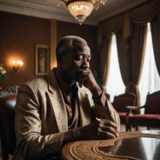
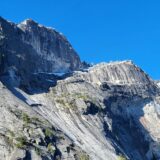





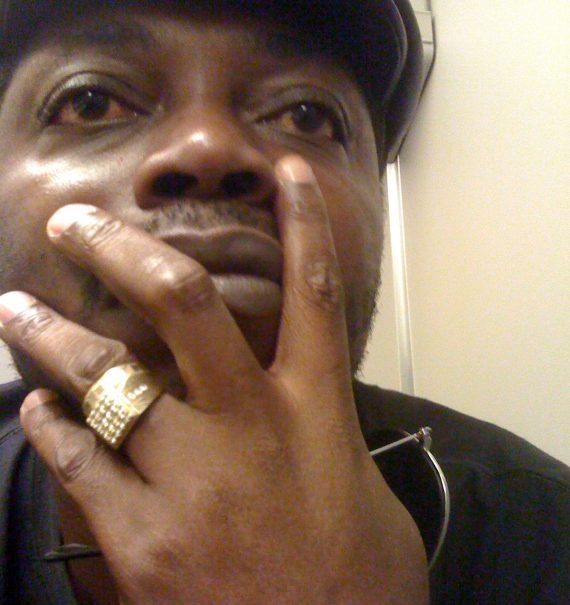
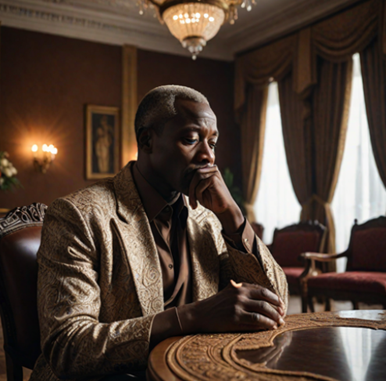


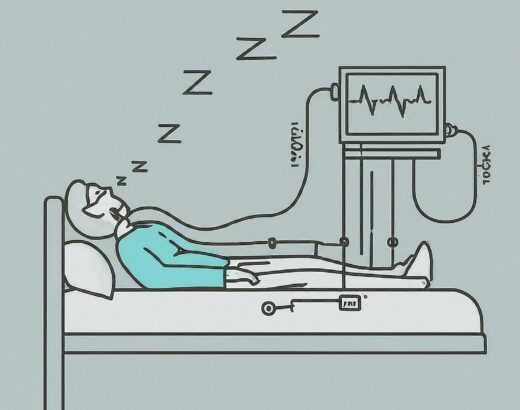
Tayo Olokode
The lady with Parkinson’s is truly a lesson in love, companionship, and the vow of in sickness and in health.
bimbo
Tayo, you are on point. Many a times in my moment of reflection, I wonder what manner of men the architects of the American constitutions were.
To have said that
“We hold these truths to be self-evident, that all men are created equal, that they are endowed by their Creator with certain unalienable Rights, that among these are Life, Liberty and the pursuit of Happiness” is not only classic but eternal.
My litmus test for a life well lived is how successful such was in pursuing happiness. My wife works in mental health and when she shares her ongoing cases with me, I shiver regarding them and then give thanks appreciating those little things of life that we all take for granted – functioning 5 senses and freedom to express ourselves.
Akeem Adedeji
I really enjoyed your writing and I hope you will develop into a book that will serve as a guide or souvenir to other people that might be interested in learning about Australia from the perspective of an African or a foreigner. But I was attracted by your comment on the man who worked for BHP for 23 years and he was let go because of his social activism. The world today is at the crossroad of corporate greed and environmental destruction. Why we need natural resources to make our modern life worthwhile, the quest to make more money has led to the situation whereby corporations have to resort to anything to make their share prices attractive. From accounting perspective, costs have not replaced price as the new tool.of antitrust. In other to justify the astronomical stock prices, corporations are cutting corners to lower cost at the expense of our environment and humanity. Look at the example of the aborigines you cited, getting them employed at the prevailing minimum wages in Australia will increase the operating costs of BHP or other global companies exploiting their homestead resources, which will have a big impact on their profitability and eventually share prices. As a capitalist myself, I’m appalled by the way capitalism is being implemented all over the world and the effect might be disastrous eventually. We have been seen it everyday in the streets of Europe, America, where rednecks have been taking over streets because their ways of life are not what they were before and somebody needs to be used as scapegoats. Today, those scapegoats are black and Hispanic Americans, foreigners, Australian aborigines, etc. But with wealth being increasingly concentrated in the hands of few, very soon the whole process will implode.
bimbo
Akeem, it was Godon Gekko in the movie “Wall Street” that encapsulated capitalism with the phrase “Greed is good.” Before him, in 1776, Adam Smith has said that “He intends only his own gain, and he is in this, as in many other cases, led by an invisible hand to promote an end which was no part of his intention.”
What this means is that capitalism is good for the society but it should not be unbridled!.y position is that where there are social causes to be pursued, the government can “throw some money at it” and you will see capitalism at dull fledge pursuing that objective. Take for example employment of Aborihines. If the Australian government sincerewants this achieved, it can give tax concessions to companies based on the number of Aborigines employed or implement a wage sharing formula with employers of labour. As it is currently, there is not enough incentives for capitalism to follow this path. The same goes for social responsibility. While companies do this to get a social license to operate, they are not committed. Some have argued that they really need not be, isnt that why they are taxed heavily by government?The government should put to good use the tax collected to pursue welfarism and the companies be left to be capitalist.
Muyiwa Alabi
Your real love Seun 😁😁
You’re a born hiker with matching writing skills who fortunately or unfortunately (depending from which side of the prism you are positioned 😁) read Accounting.
Alas you were born in Ibadan .
No place to hike 😁😁😁
bimbo
Muyiwa, you are right. I love travelling and I see tge whole earth as one beautiful canvas that I must explore in full.
By the way, I studied Accounting not Actuarial Science. I tend to think I was fortunate in doing so as, without it all these my wakajugbe msy not have been possible. It was my get out of ‘hunger‘ card ooo. I never liked the profession but it was paying the bills and as soon as I was able to, jilted it for something more satisfying.
Regarding Ibadan, I am still exploring that space. Recently, I summoned on courage and took on Oke Are (Bower Tower). The ill reputation and scaremongering I received while growing up has made the place a no-go area for me while growing up. After surviving the trek up hill, the many religious worship centres and the “hard blood shot eyes“ that I saw were unsettling and it didn’t take me long before abandoning that plan.
I plan to write about my experience some day regarding that visit and the failed trip to Lalupon to discover the point where Ironsi and Fajuyi were assasunated.
Abiola
Nice write up Seun (still trying to get use to Bimbo). I see the mining opportunities that Australia had taken up and “benefitting” with all the attendant issues of pollution, which by the way exist everywhere, but still look at the way Nigeria had spurned those opportunities. We have so much deposits, also iron ore in ajaokuta, that we shouldn’t be “suffering”.
Enjoy your travels my man. I’m sure Madam is enjoying it as much. Well done.
Leke Akinrowo
Beautiful writing and illuminating descriptions of the unknown parts of Australia. I particularly enjoyed the lessons our own people should learn back here on Nigeria, from the buy-back scheme which Rivers State could learn from, to the DICON Salt example. Kudos Bimbo.